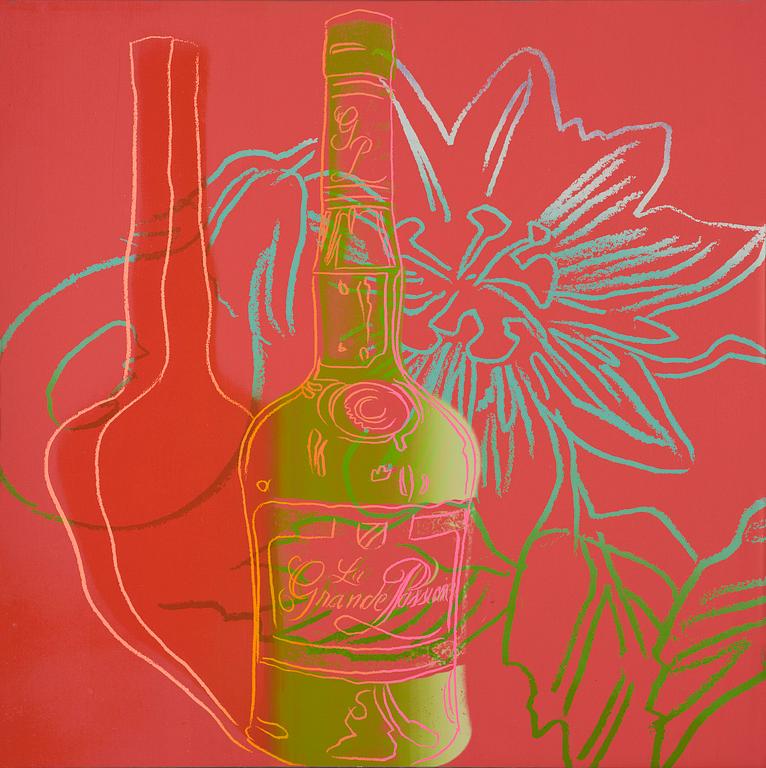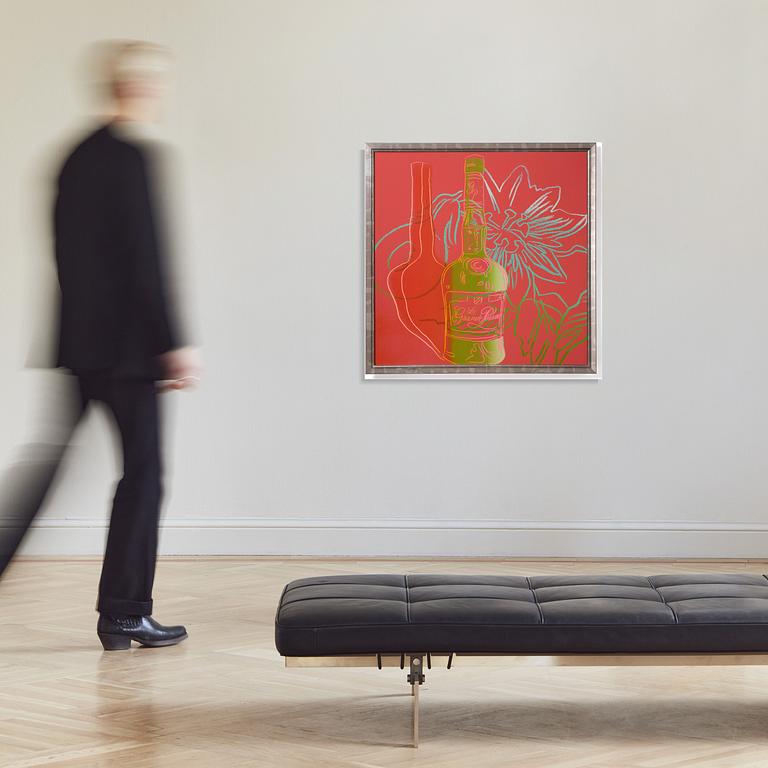Andy Warhol
"La Grande Passion"
Signed Andy Warhol and dated -84 on the overlap. Acrylic and silkscreen ink on canvas 101.5 x 101.5 cm. Estate stamp "Estate of Andy Warhol" and numbered PA 22.013 verso. The number is confirmed by the Andy Warhol Foundation.
Saleroom notice
Heland Wetterling Gallery, "Andy Warhol", Stockholm, 1999, illustrated full-page in exhibition catalogue.
Provenance
Wetterling Gallery, Stockholm.
Private Collection, Stockholm.
Exhibitions
Wetterling Gallery, Stockholm, 1999.
Literature
Heland Wetterling Gallery, "Andy Warhol", Stockholm, 1999, illustrated full-page in exhibition catalogue.
More information
Bukowskis proudly presents Andy Warhol's “La Grande Passion” (1984), which encapsulates the breadth of the artist's oeuvre and showcases his characteristic use of bold colours, repetitive motifs and his ability to turn consumer goods and celebrity images into art.
With his background as an illustrator for fashion brands and magazines, it was natural for Andy Warhol to draw on this imagery in his work. After graduating with a degree in Pictorial Design from the Carnegie Institute of Technology in 1949, Warhol moved to New York to pursue a career as a commercial artist.
In the 1960s, Warhol began using mass-produced objects as subjects in his art. His breakthrough came with the exhibition at the Ferus Gallery in Los Angeles, where he showed 32 paintings of Campbell's Soup Cans - a seminal event that marked his transition to contemporary art. In the decades that followed, he became a pioneer of Pop Art, redefining the possibilities of painting and printmaking.
Using striking logos and the familiar visual language of advertising is reminiscent of Warhol's earlier iconic work with Brillo boxes, Campbell's Soup cans and Coca-Cola bottles. For Warhol, these brands, despite being products of capitalism, could act as a levelling force in society. He believed that these objects stood for something very democratic and were consumed by both the very rich and the very poor.
Warhol turned against the dominant art movement of the time, abstract expressionism, which emphasised self-reflective and expressive painting.
"The Pop artists made images that anyone walking down Broadway could recognise in a split second - comic books, picnic tables, men's trousers, celebrities, shower curtains, refrigerators, Coke bottles - all the great modern things that the Abstract Expressionists tried so hard not to notice at all." - Andy Warhol
The "La Grande Passion" motif was commissioned by Carillon Importers in 1984 for an advertising campaign for a liqueur to be introduced to the American market. For inspiration, Warhol used his beloved Polaroid Big Shot camera to create the background for the advert. The Polaroid image was developed and transferred to a negative, which formed the basis of the image that was then screen printed. A stylised passion fruit flower, which appeared to be done in different coloured pencils, added another vibrant dimension to the composition.
Carillon Importers, the company behind the liqueur brand, was so pleased with the “La Grande Passion” campaign that Michel Roux, president of Carillon Importers, commissioned a new project from Warhol. In 1985, Warhol created a poster for the launch of the Swedish brand Absolut Vodka in the United States. It was Warhol who introduced the idea of inviting other artists to create their own versions of Absolut, which became one of the most influential campaigns ever. The success of the Absolut and La Grande Passion campaigns is testament to Andy Warhol's penchant for comics and repetition, his characteristic style of strong, contrasting colours and his collaborative approach.



























































